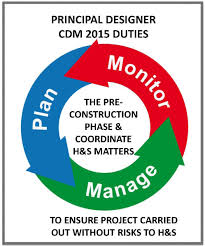Letting in more light is something that many of us think about, particularly during the dreary, darker months. Some homes don’t get much to start with while others may have had a new extension added which resulted in some darker internal areas. Whatever the reasons for a darker home, roof lanterns are an excellent way of flooding it with light. If you live in the southeastern boroughs of London, you are in a great spot for some extra natural daylight. Roof lanterns can be included into almost any home whatever the style of architecture around Bromley, Bexley or Greenwich. We explore the main things to consider when thinking about installing a roof lantern.
Where should it go?
It could go almost anywhere where you want to bring in more natural light. However, there are a few considerations that come with each room:
- Adding a roof lantern to your lounge or living room could mean you end up with too much sunlight on soft furnishings or it makes it too difficult to watch TV or use a computer.
- In bedrooms you will need to include blackout blinds to enable you to have sufficient and good quality sleep.
- A roof lantern in a kitchen is great at flooding what is typically a darker part of the house, but ventilation may need to added to ensure any condensation is adequately dealt with.
- The same applies to bathrooms which have very high levels of moisture. Another issue to consider is whether your bathroom is overlooked by neighbours, in which case you may need to add blinds or a sandblasted glazing option.
- Hallways and corridors are ideal for roof lanterns as they do not suffer from overlooking or condensation issues and can help bring plenty of light into your home.
What is the right orientation?
Wherever you choose to have your roof lantern installed you will need to discuss the right orientation with your architectural designer. Depending on what aspect the room has – in other words, is it north- or south-facing – its orientation will be important. In south-facing rooms, for example, you want to avoid being dazzled by the sun for large parts of the day, particularly during the summer months.
Bear in mind that:
- A north-facing roof lantern will give you constant but cool light.
- A south-facing one will probably be too warm in the summer – unless you have a cover or higher glazing specification – while it will help warm your room during the winter.
- A west-facing roof lantern will reap the benefits in the afternoon while an east-facing one will get the morning sun.
Glazing
The right glazing specification can help prevent too much solar heat gain but will come at a higher cost. However, it is worth bearing in mind that your energy bills will be lower as it will also have a higher thermal efficiency. Special solar reflective coatings are also available to minimise solar heat gain. Alternatively, you can opt for more traditional blinds or other coverings that can help block out strong, unwanted sunlight at particular times of the year.
Experts in architectural design
At Wilson Architectural Building Designs we have a wealth of experience when it comes to architecture in Bromley, Bexley or Greenwich – 25 years of it to be precise. If you are considering installing a roof lantern why not talk to us first? We can advise, design, and manage construction for you. Drop us a line at info@wilsonarchitecturalengineering.co.uk or give us a call on 0800 669 6912 for an initial and informal consultation.
Ask us anything about architecture and building consultancy.
We’re ready to advise.






